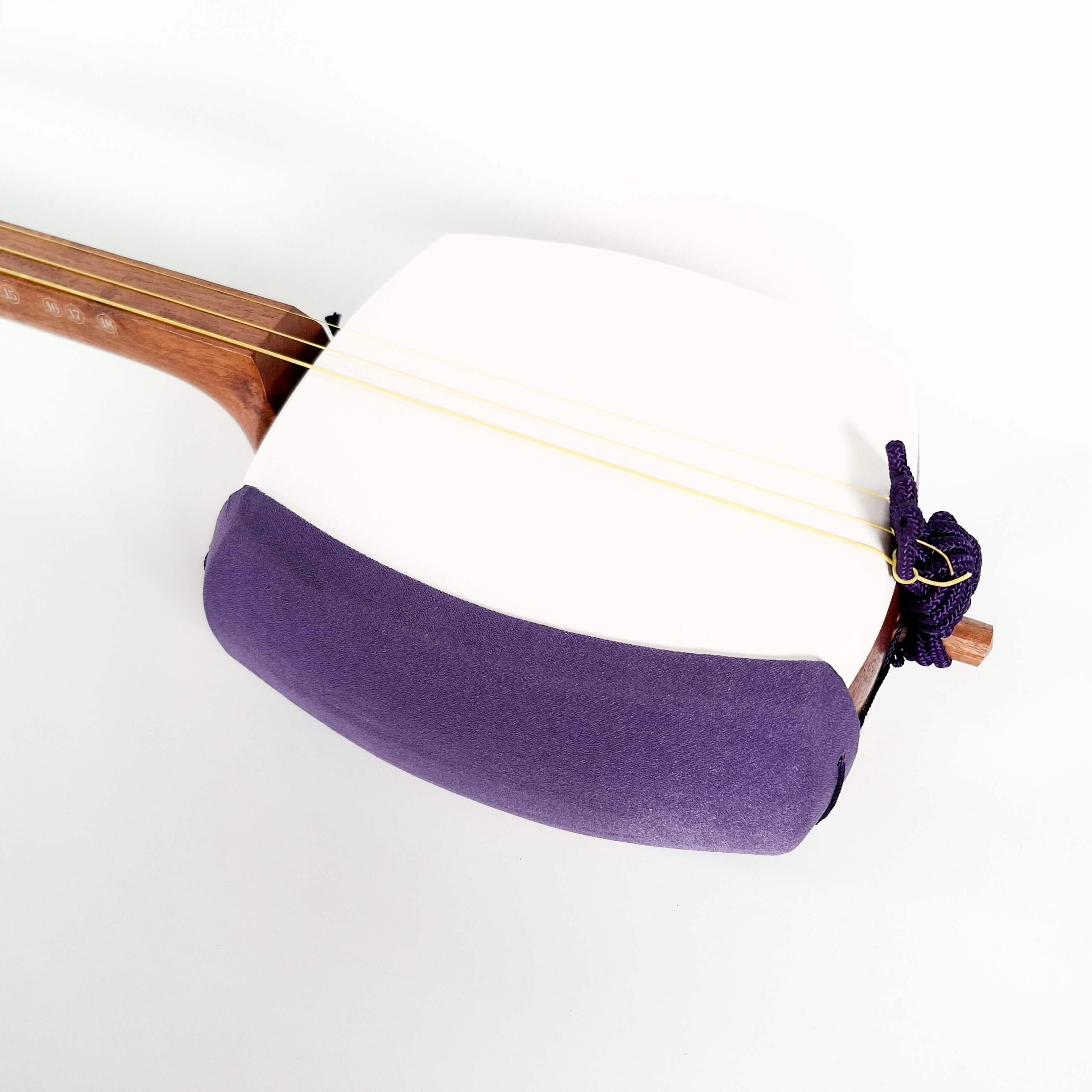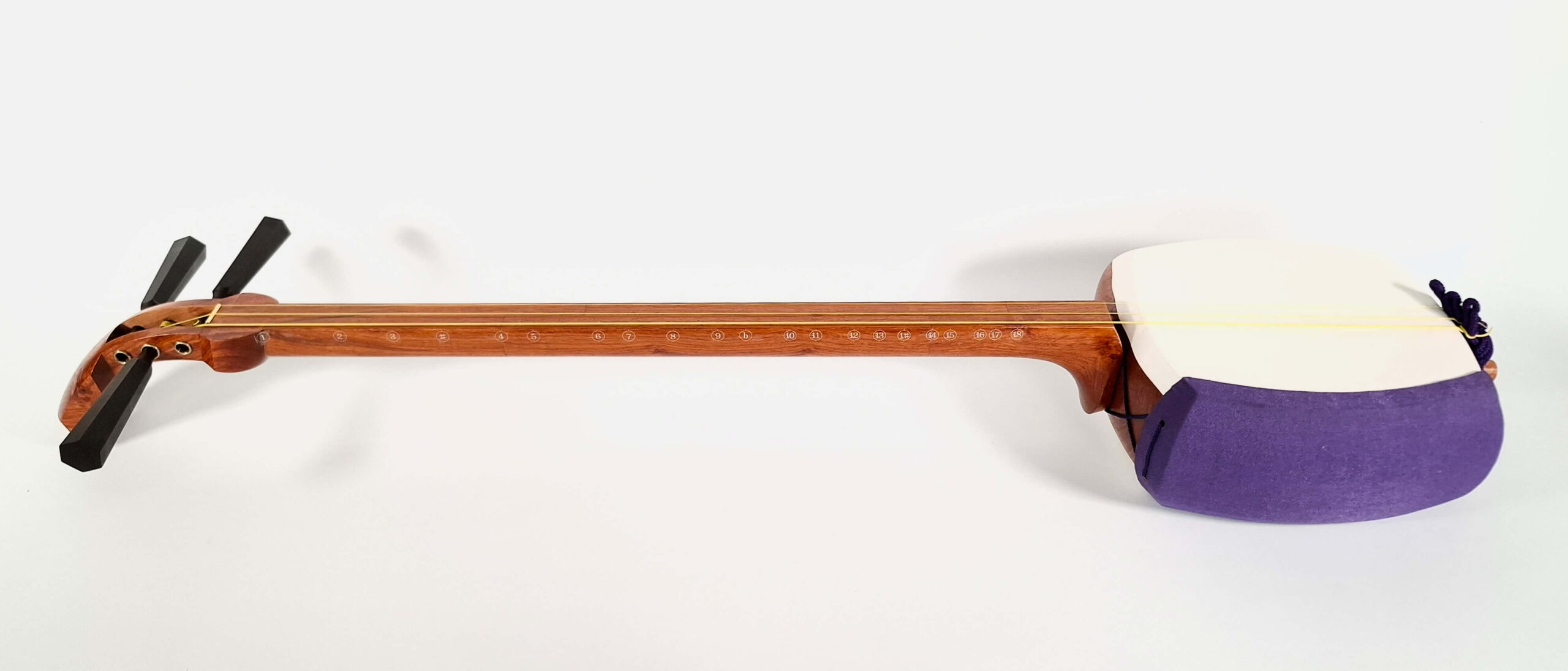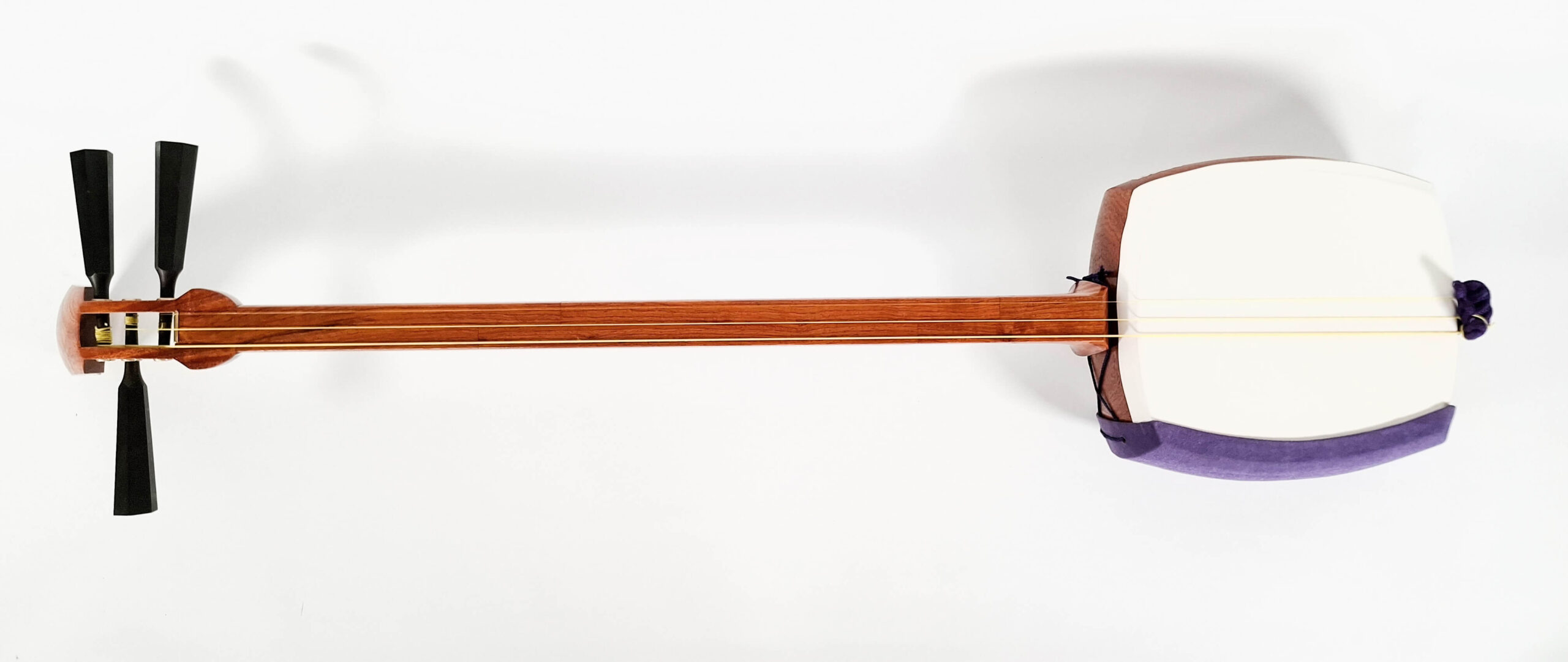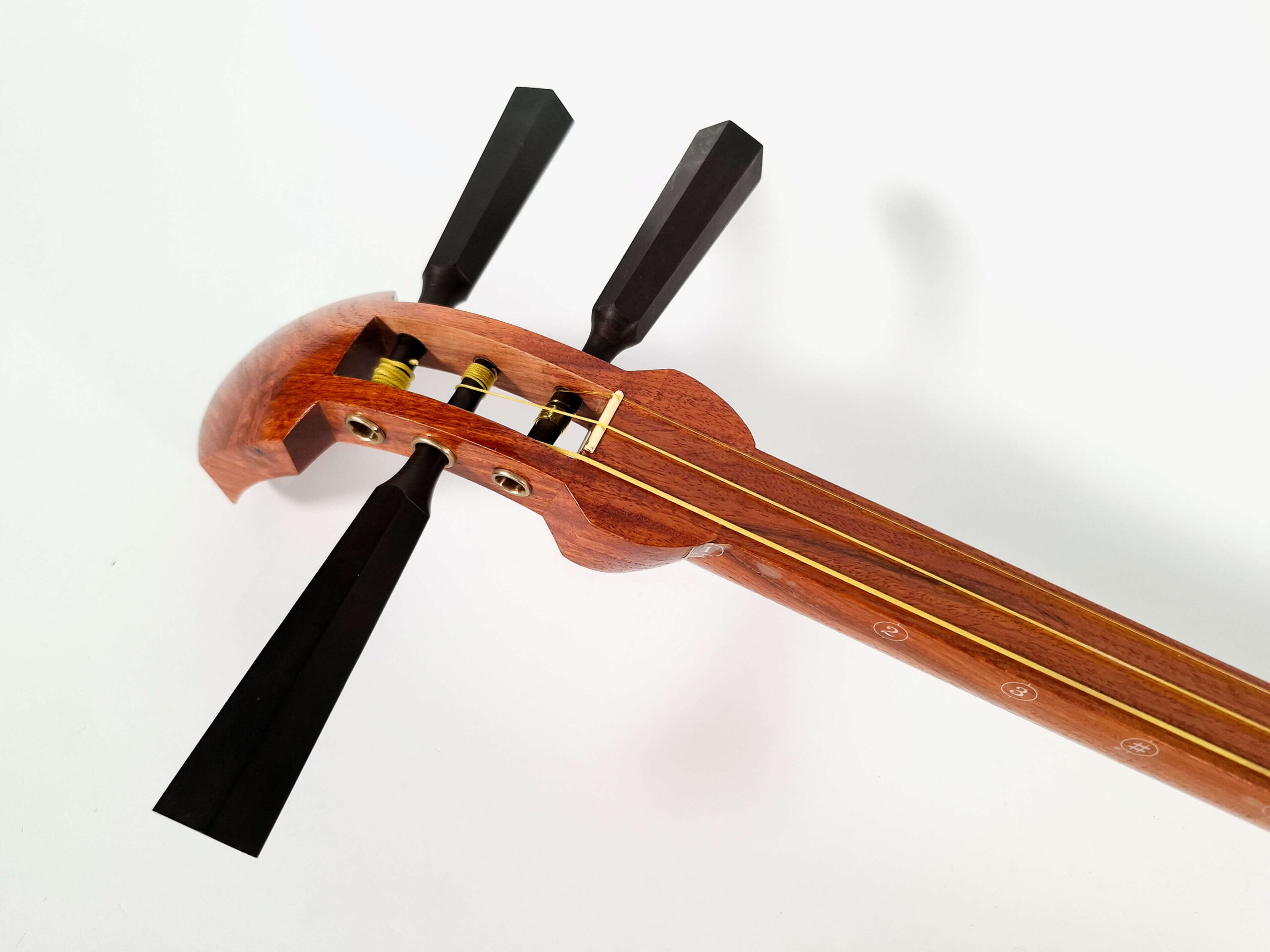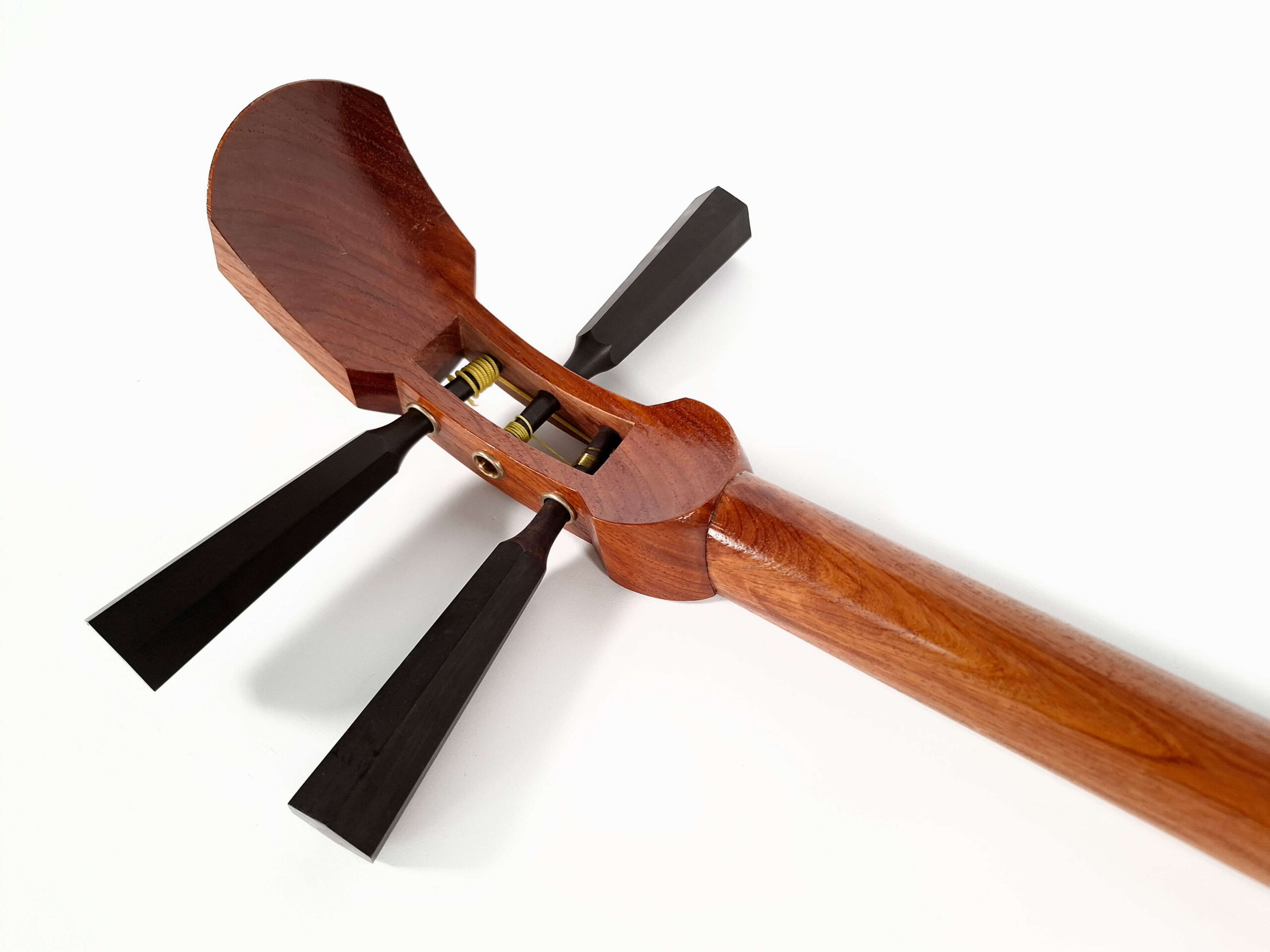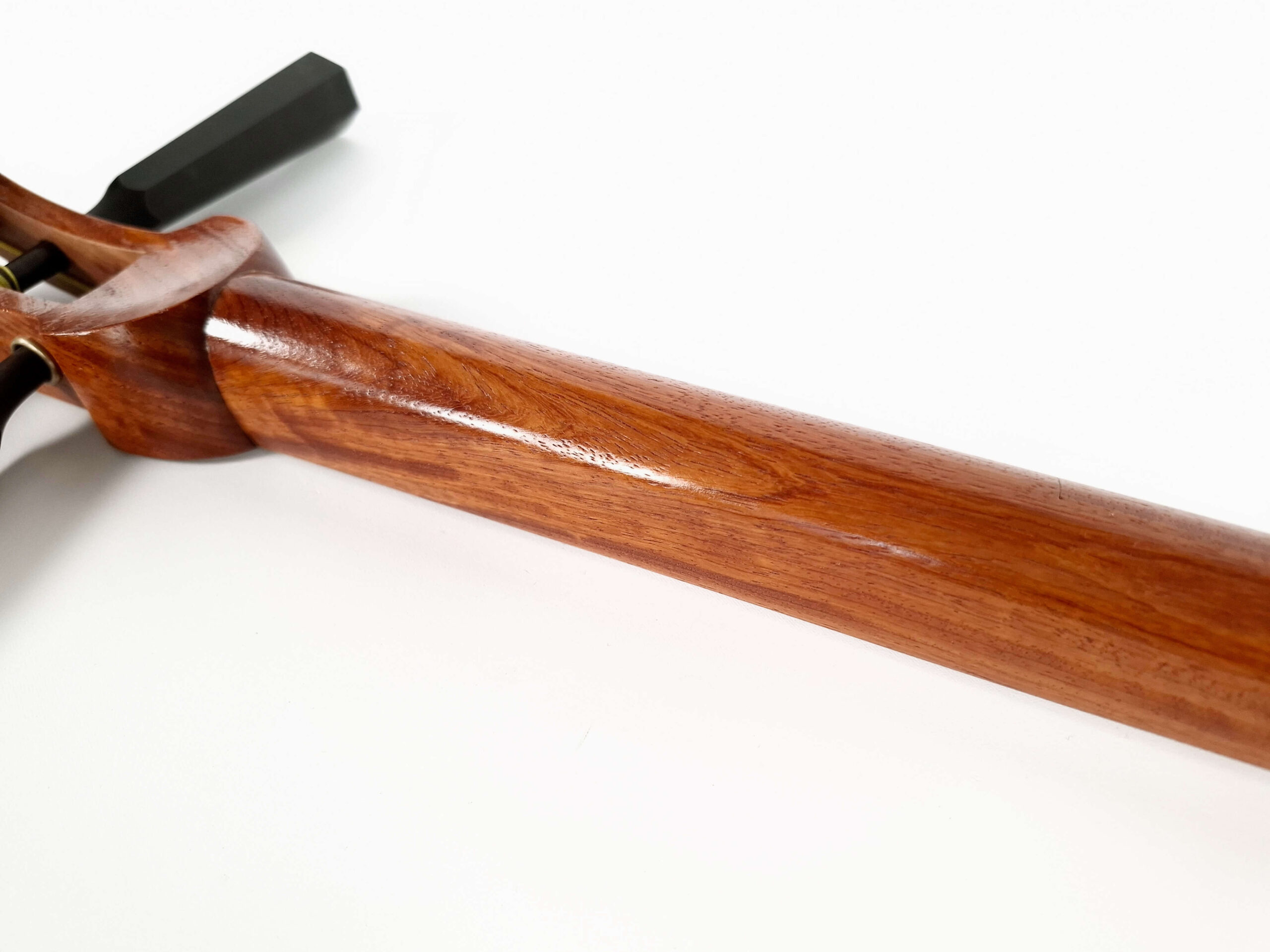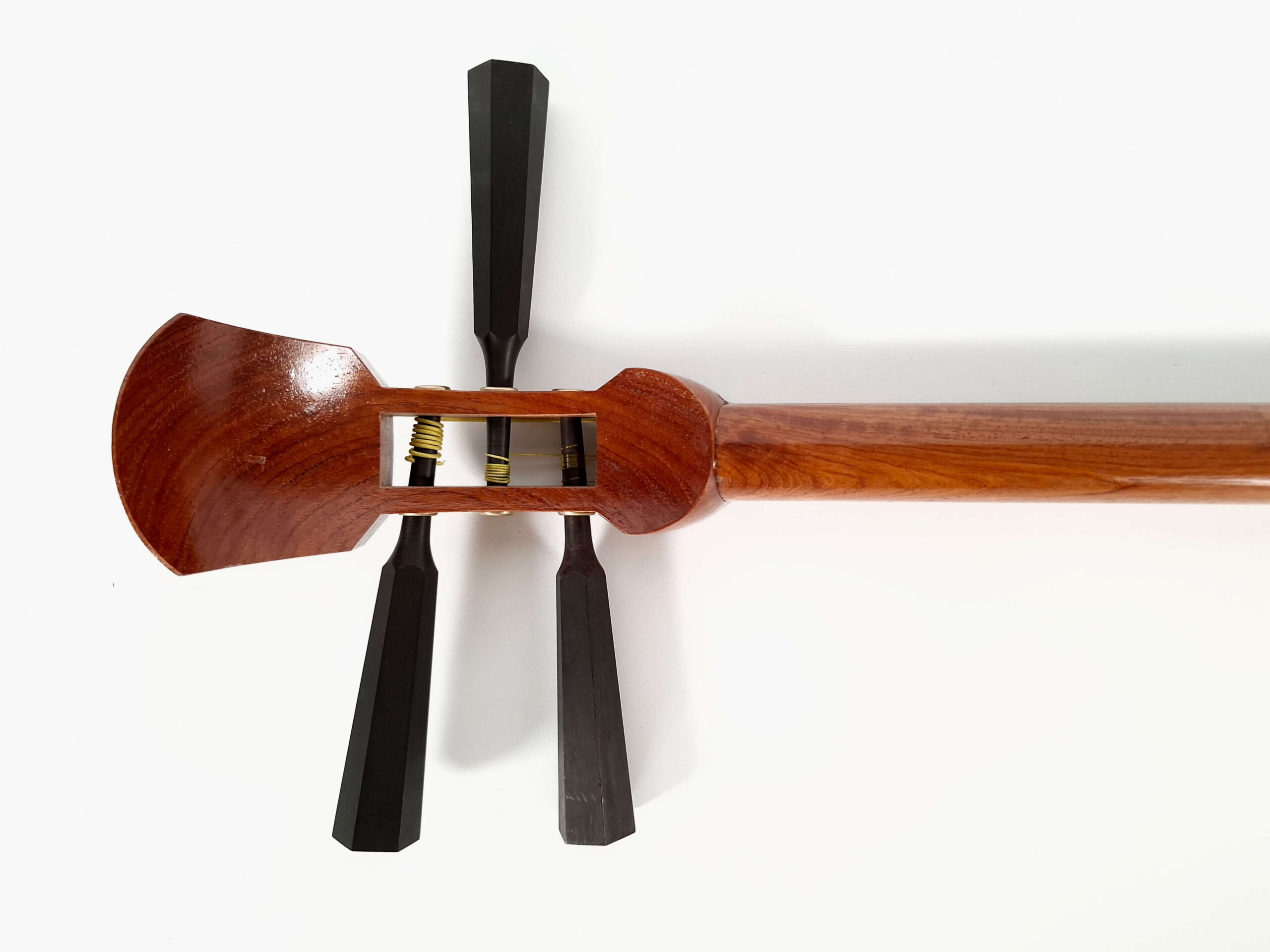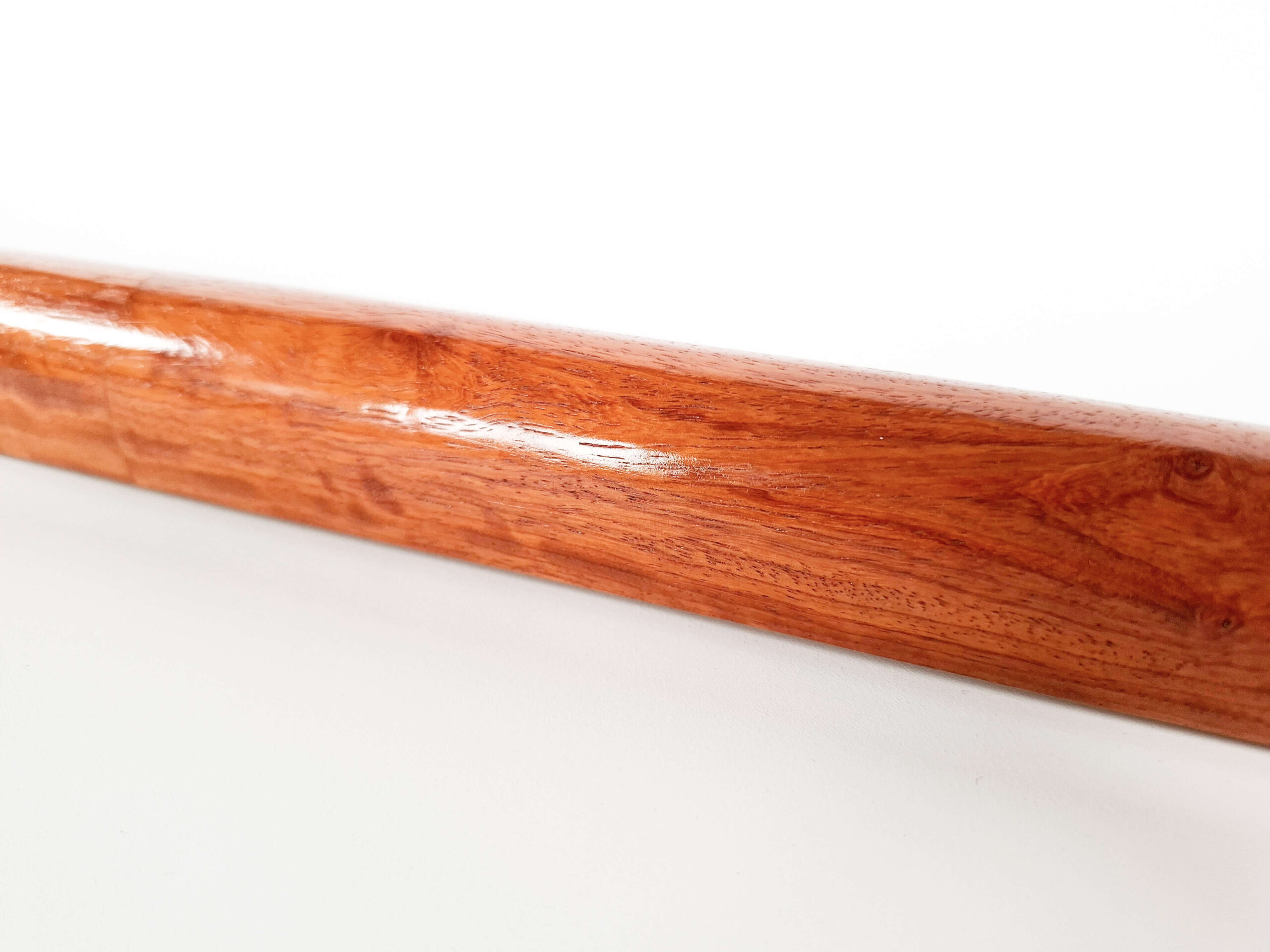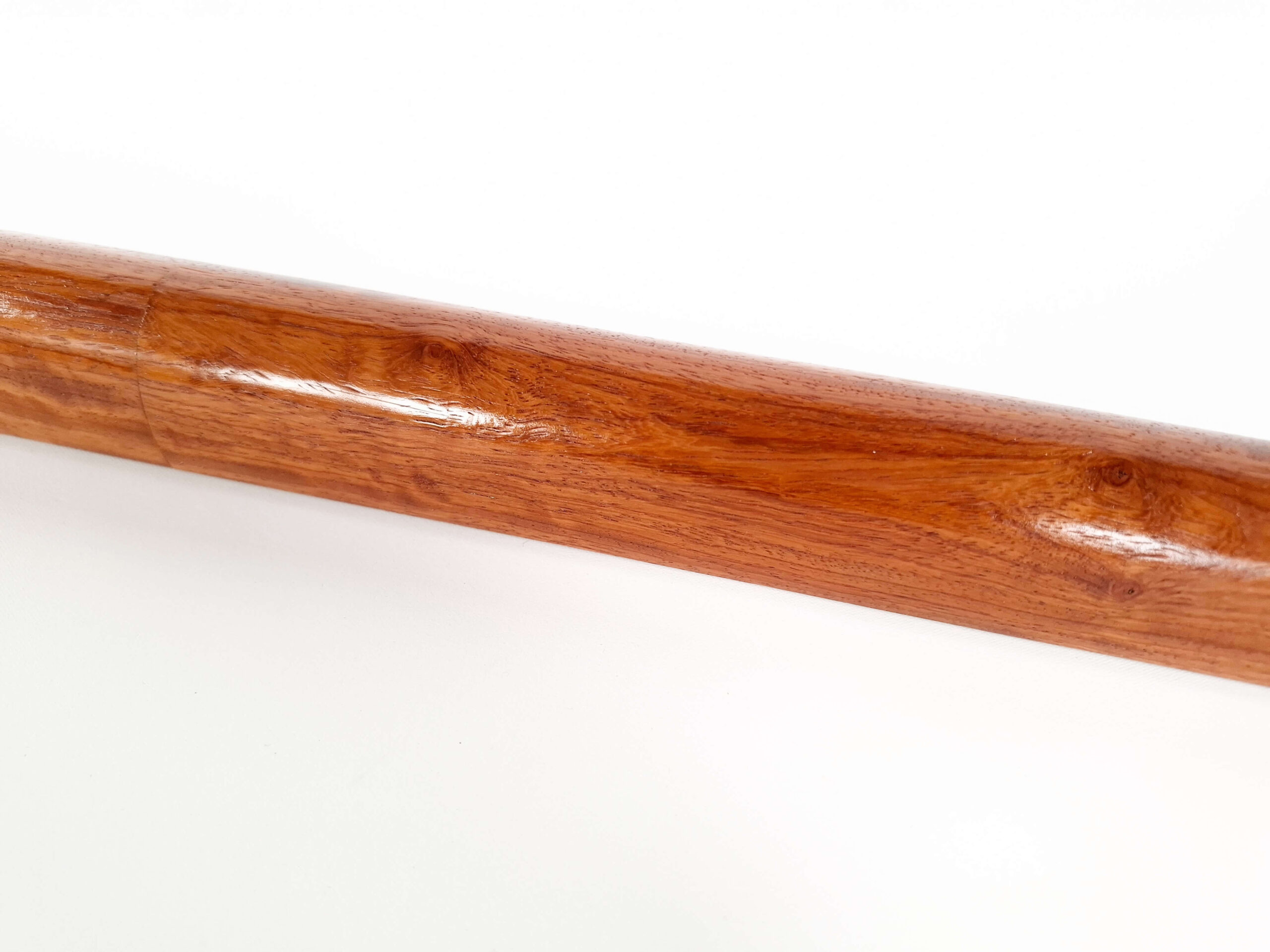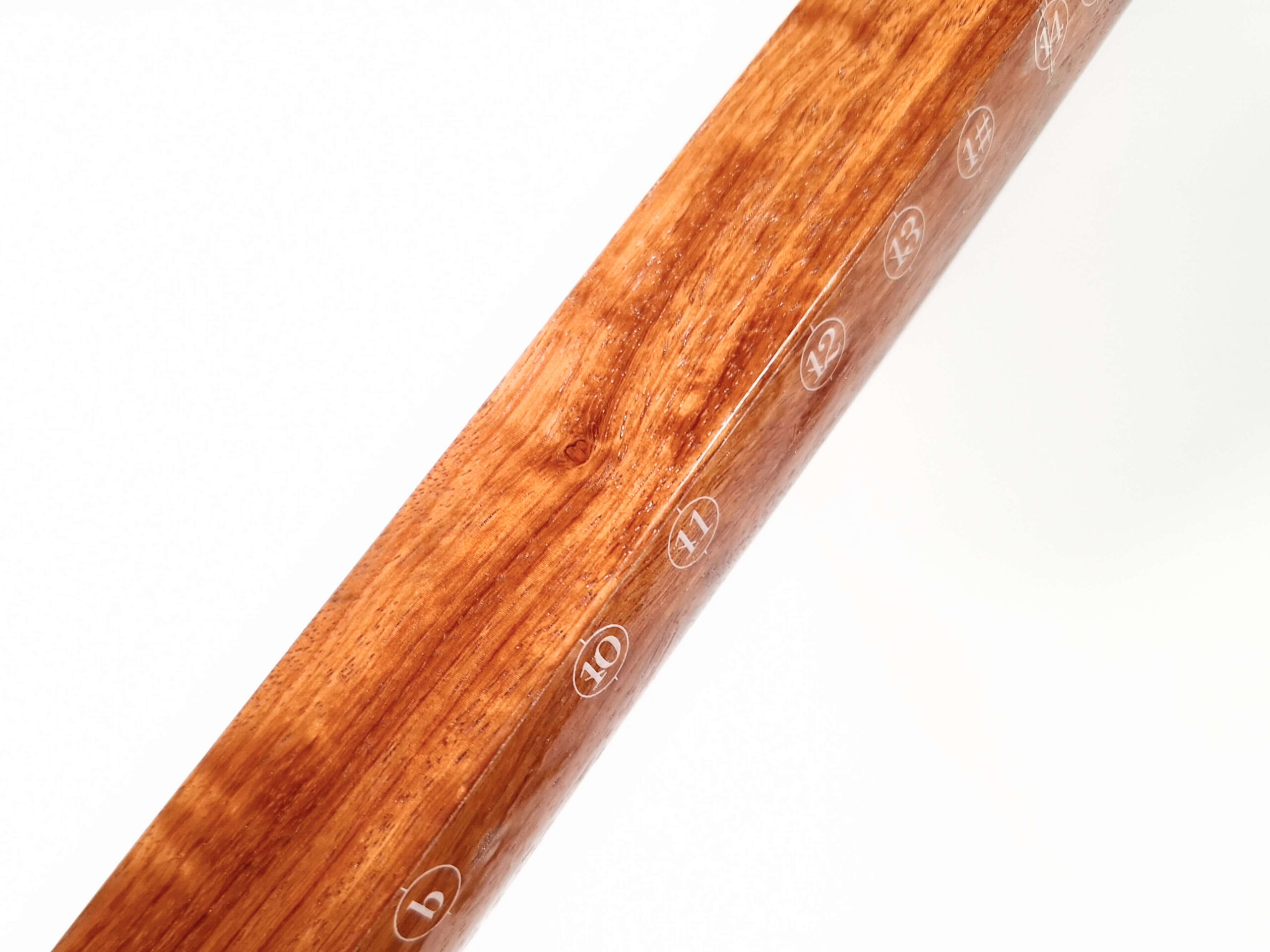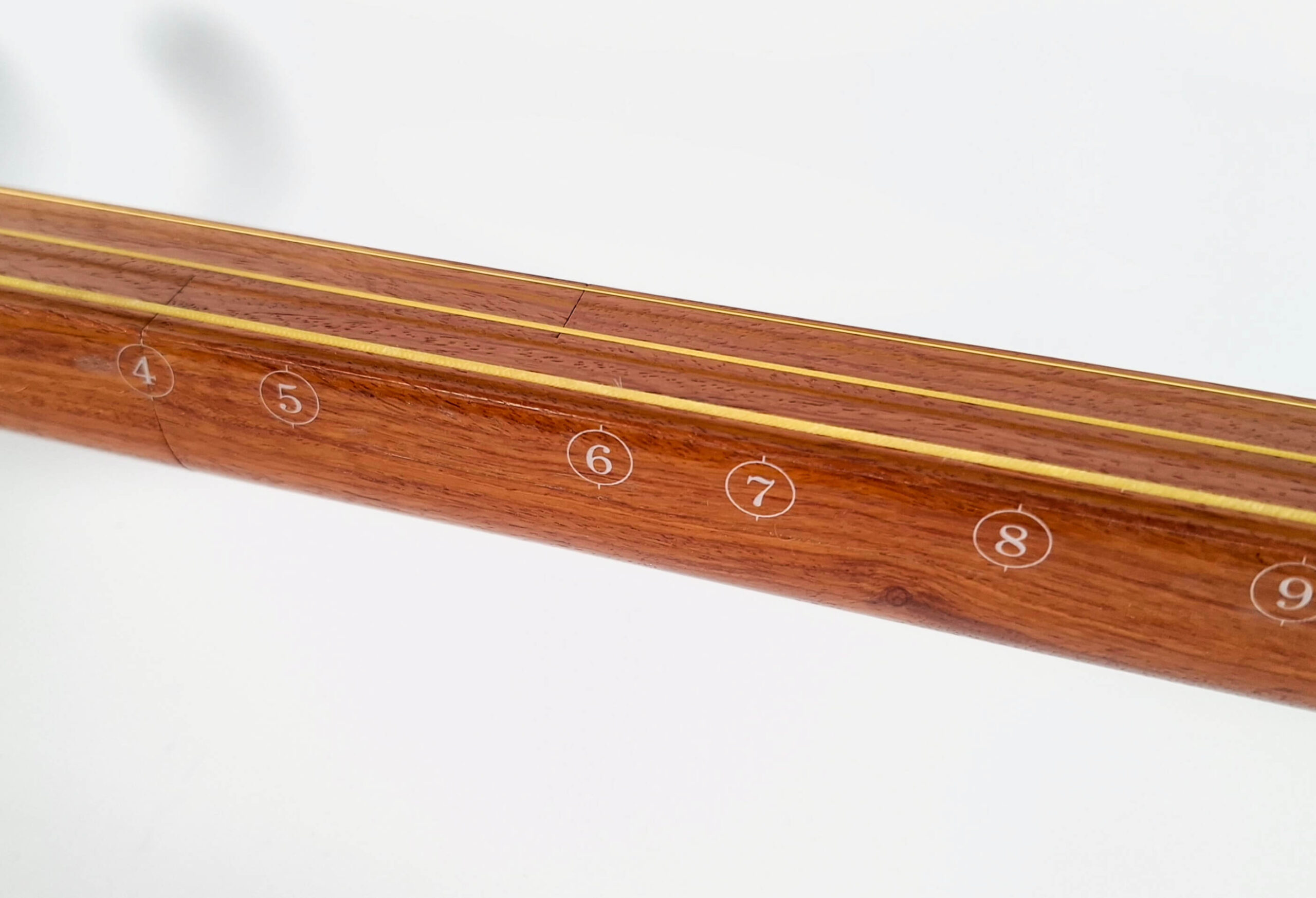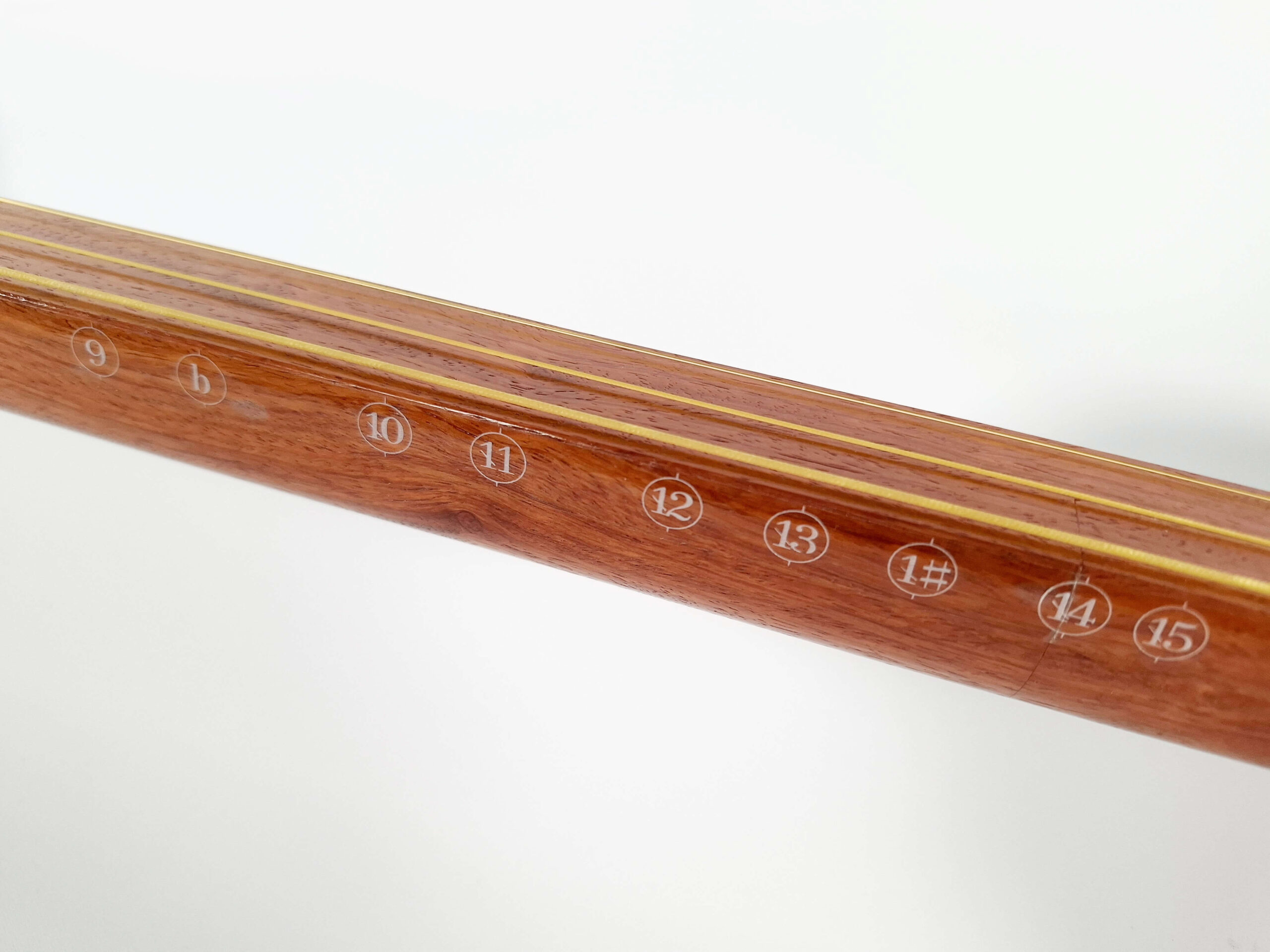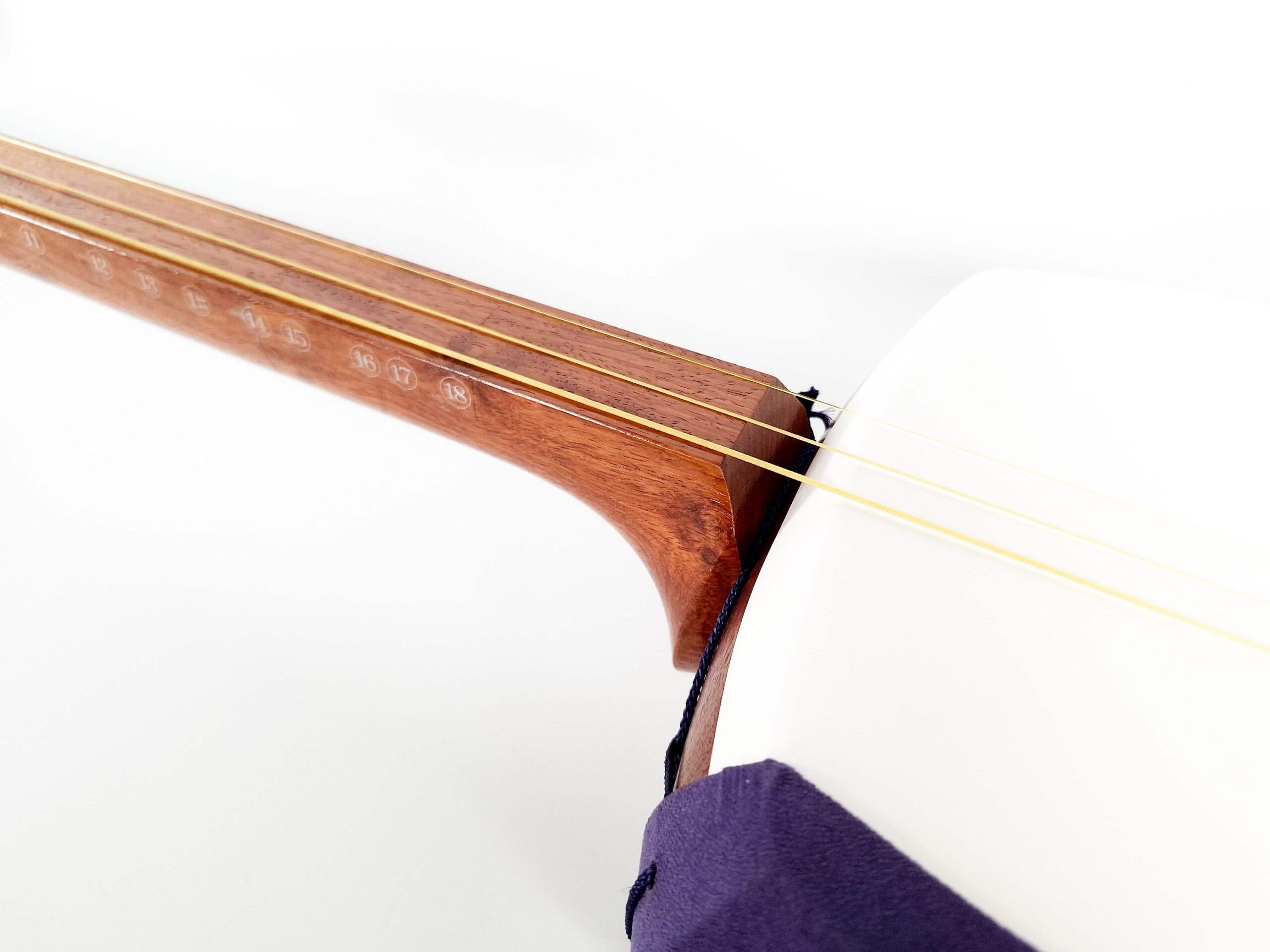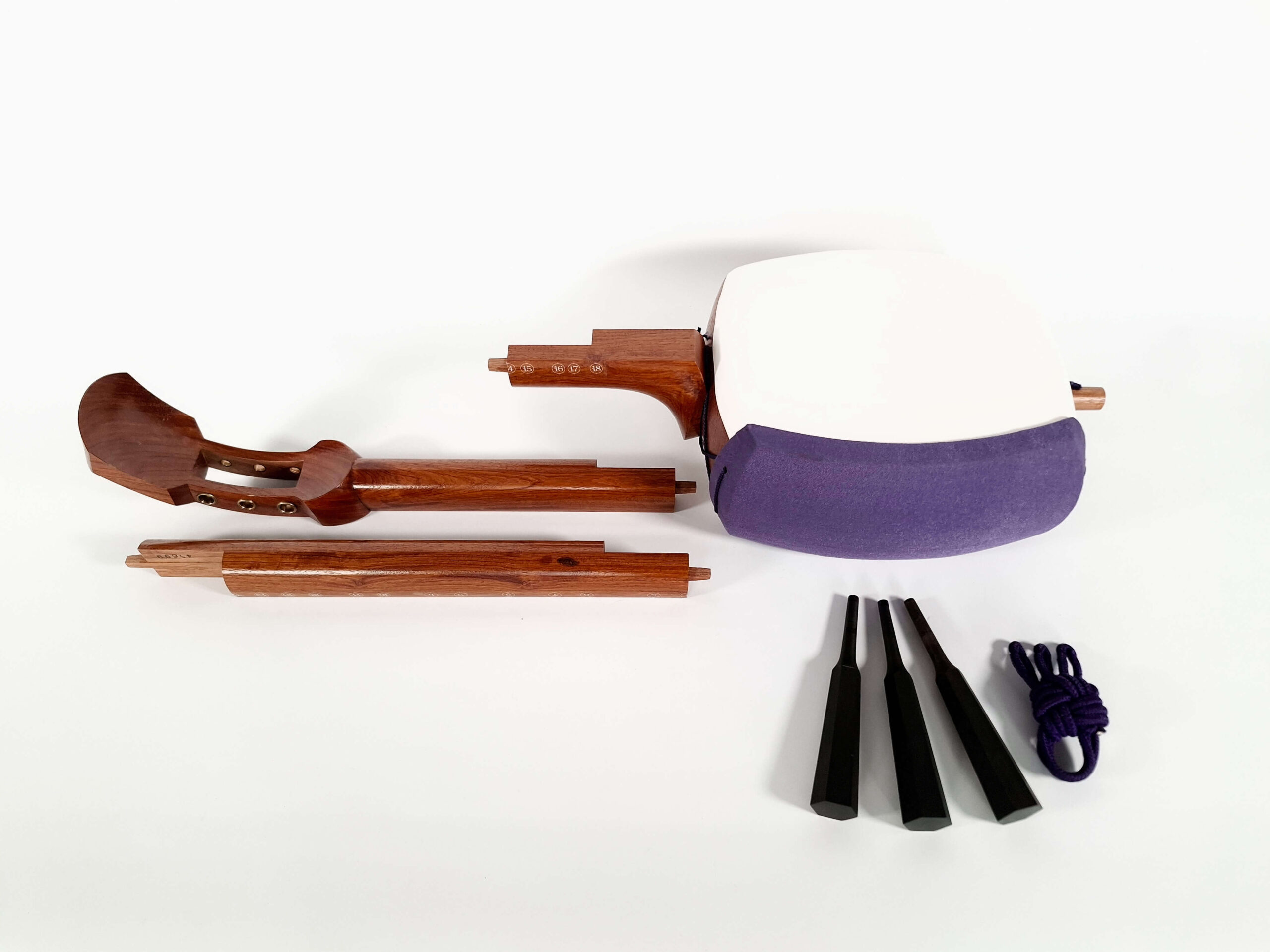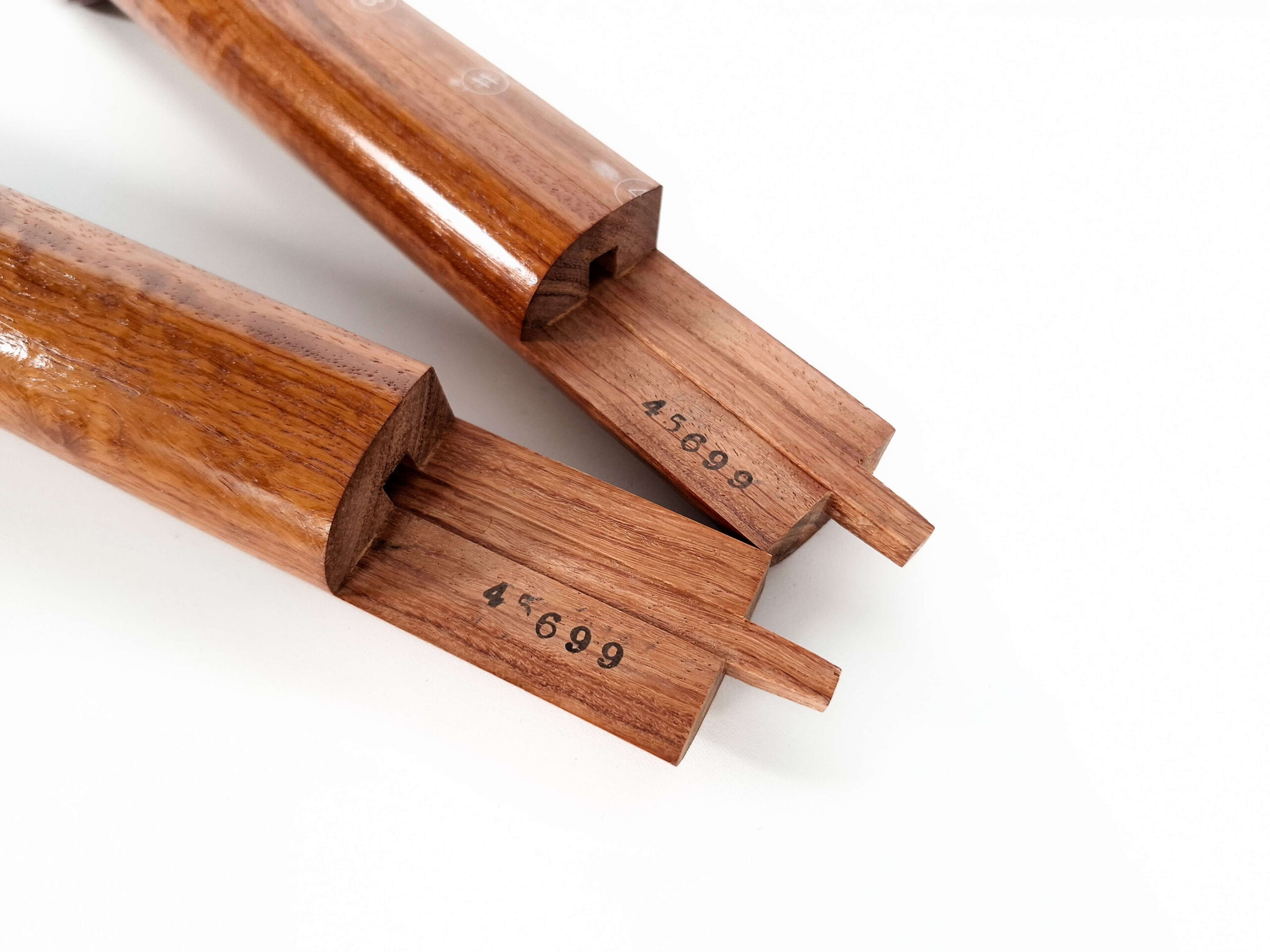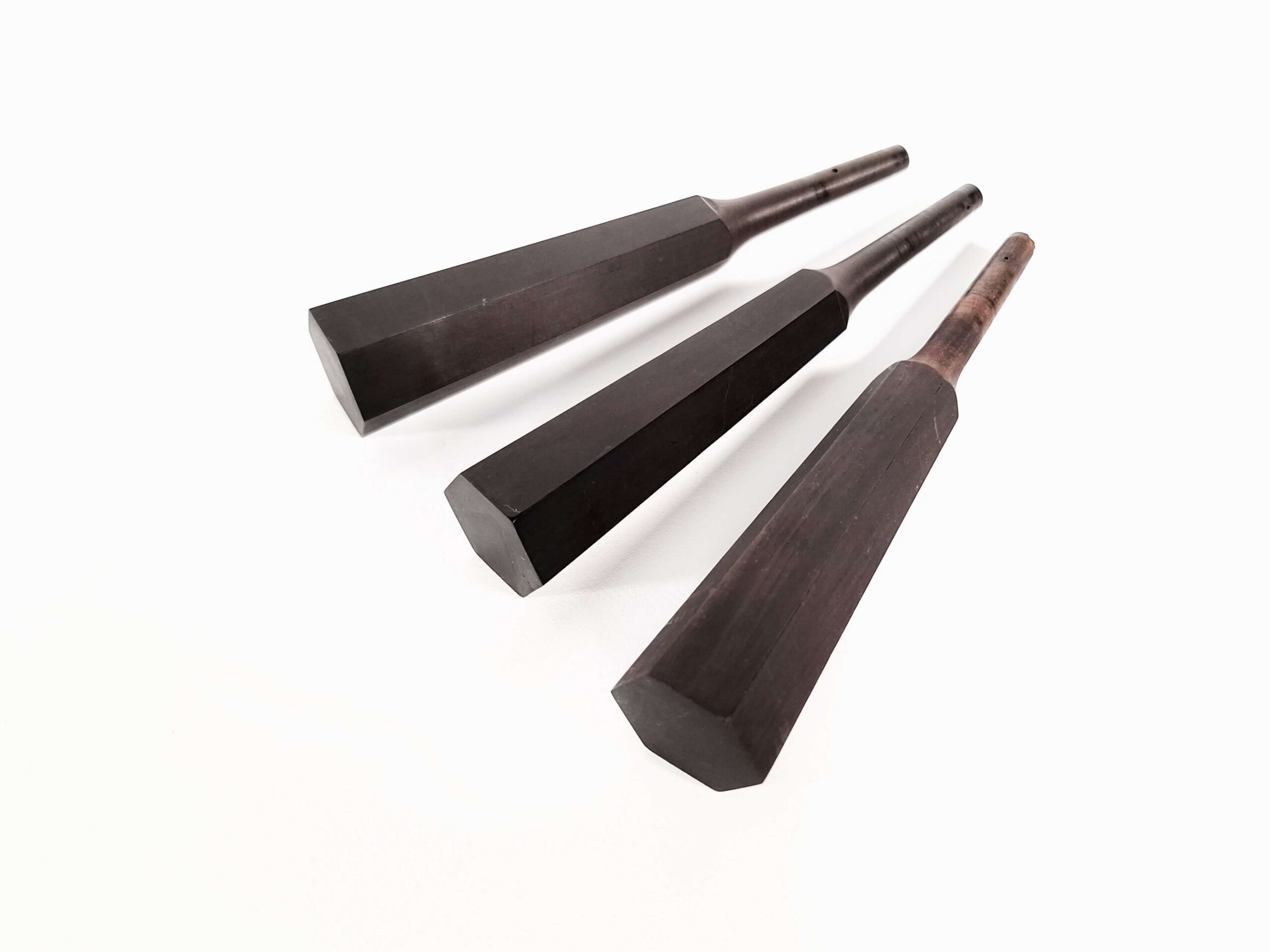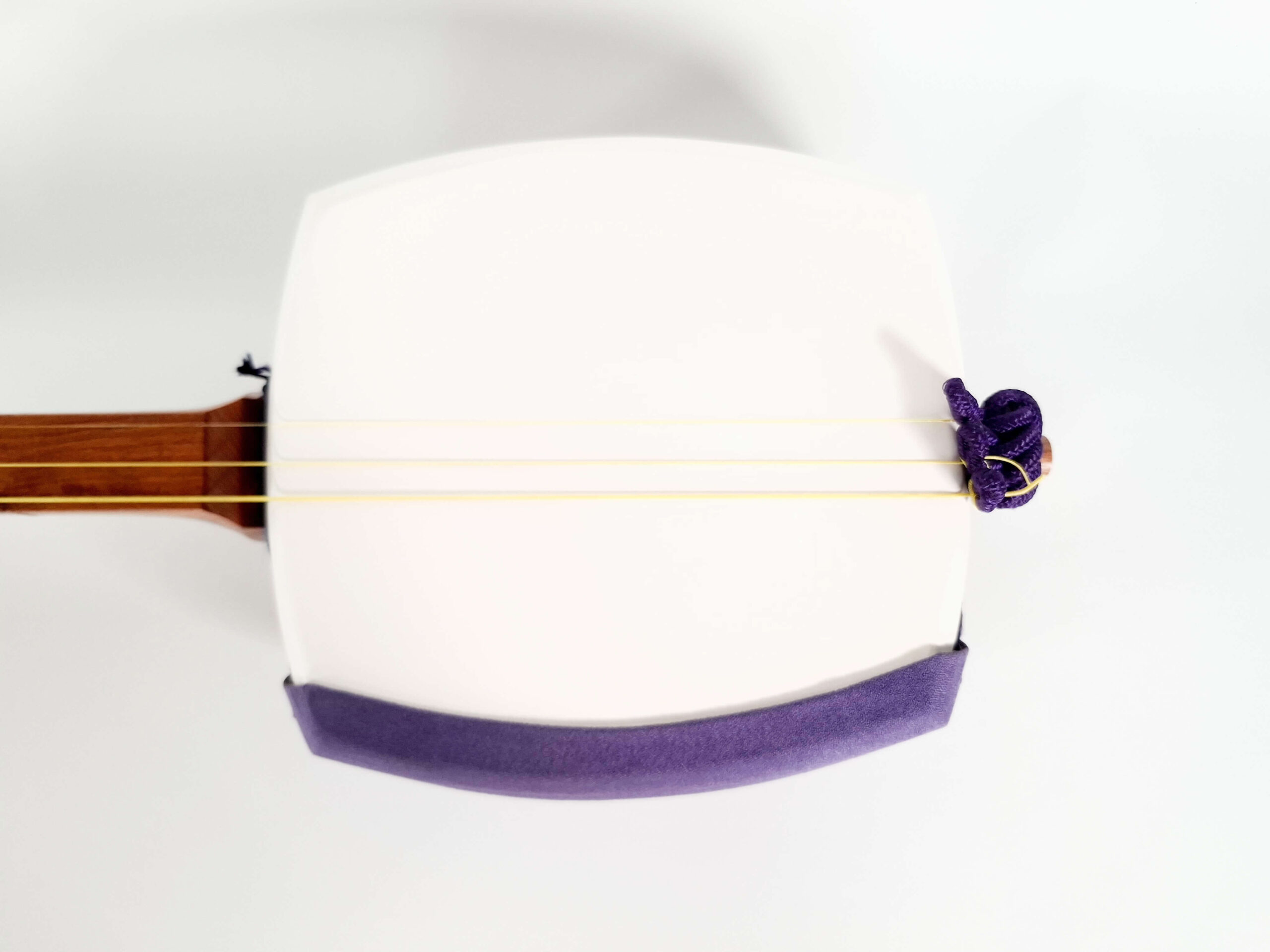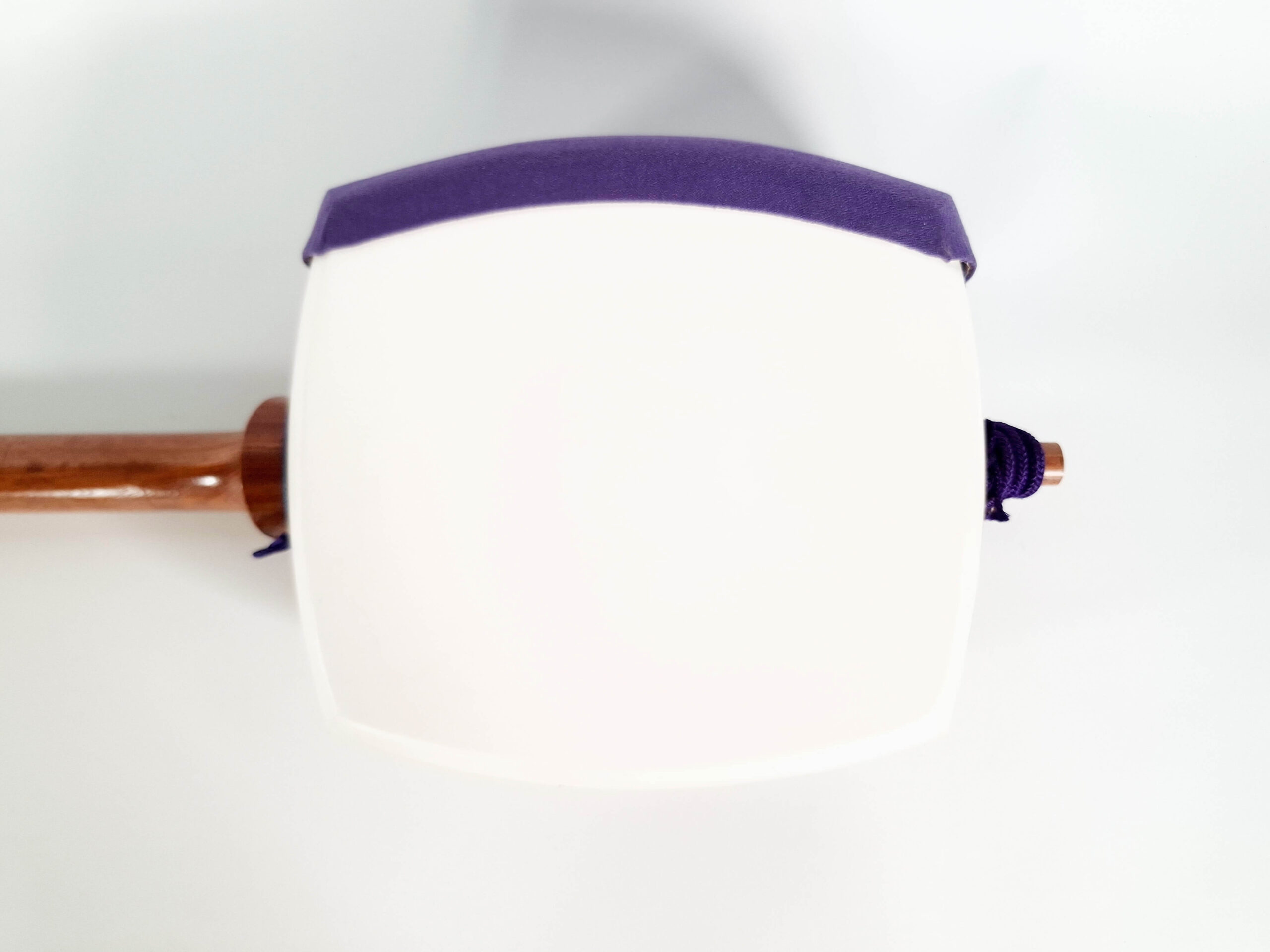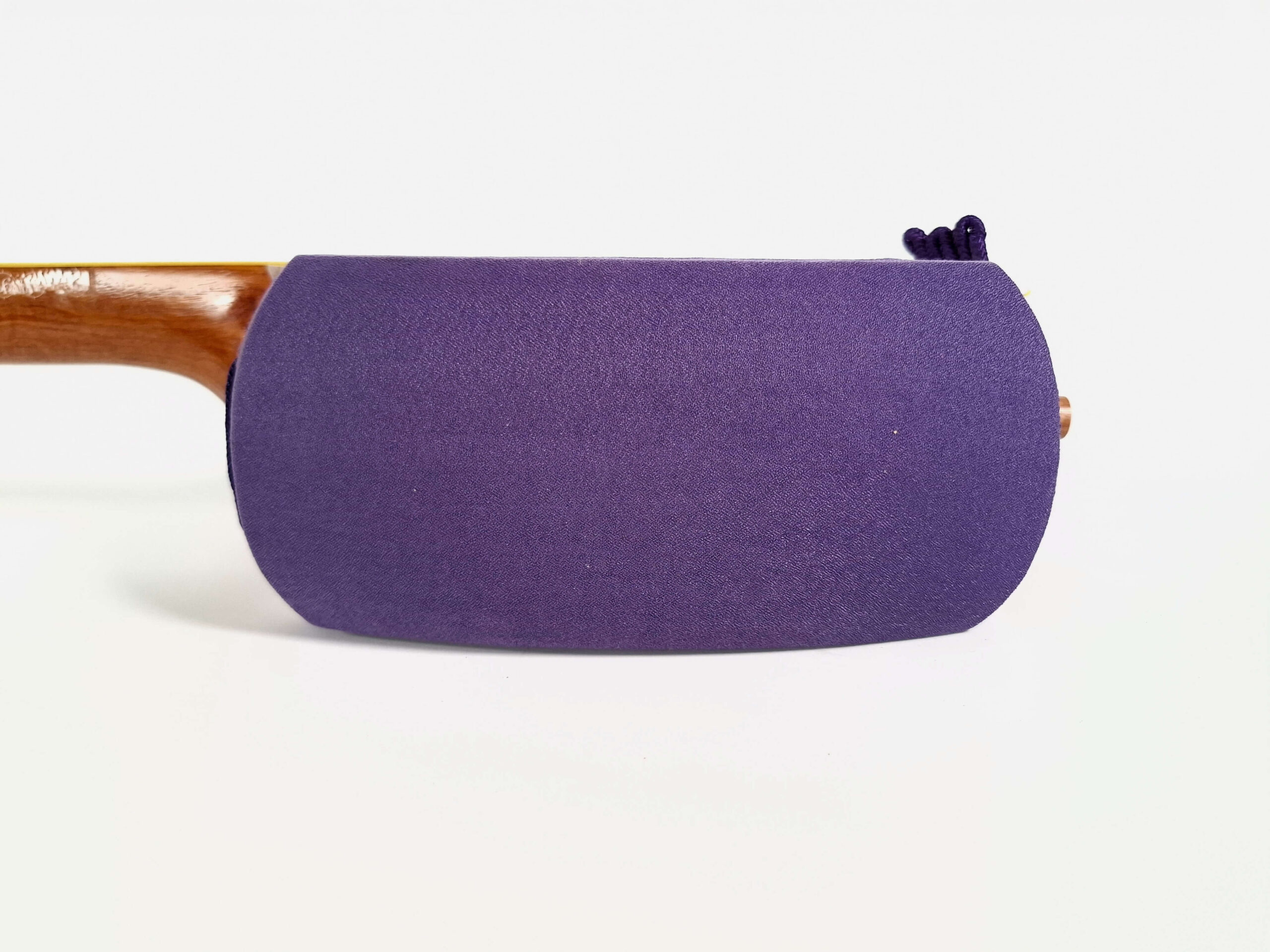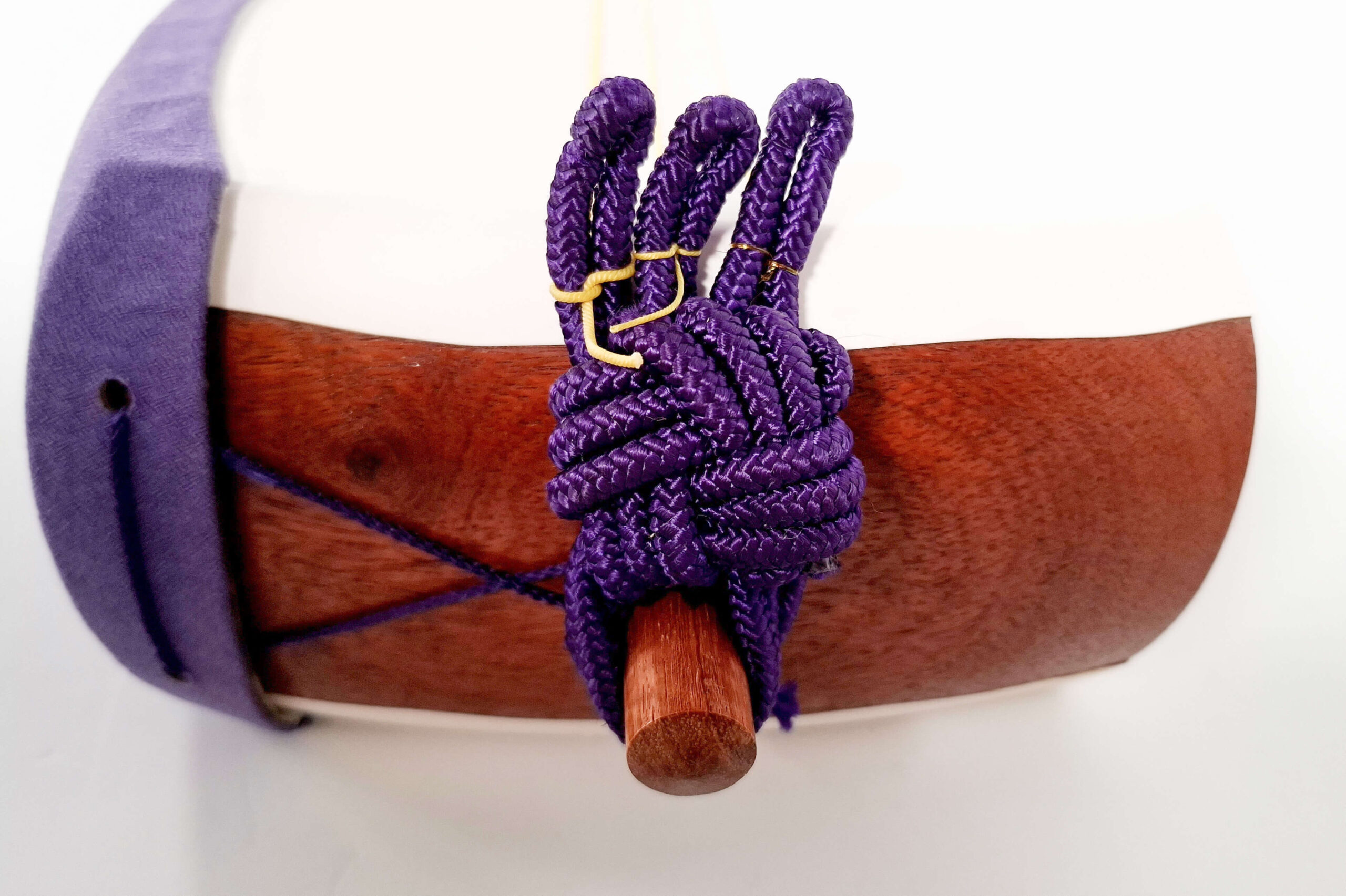Futozao Shamisen Beginner Set | Haru
- futozao shamisen
- sao width: 32,75 mm
- sao height: 33,25 mm
- fingerboard: 30,5 mm
- made from karin wood
- synthetic front and back skins
also included in the set:
- neo
- doukake
- strings
- fujaku strip
- dougomu
- tenjin cap
879,00 €
Details
This shamisen is what most people would consider a “beginner shamisen”. To emphasize the freshness and energy that learning a new instrument brings, I called it “Haru” (春) which means “spring” in Japanese. Let new sounds, wonders and insights blossom when you play this shamisen!
The instrument is in very good condition – so go all out!
The style of this shamisen is Futozao, typically used for Tsugaru playing style. Neck sizes vary within the building types, and this one is average.
Wood:
The instrument is made from karin wood – an established choice for beginner instruments.
Accessories and Skins:
The instrument comes with a classic purple neo and a matching purple doukake. Also included in the package are a set of fresh strings, a tenjin cap, a fujaku strip (position marker) and a dougomu. A full set indeed!
The dou is skinned with Fibersen – an older generation of synthetic skins. These skins are still very common. The skin tension is not very high, so the instrument is not too noisy. A fine choice when you have sensitive neighbors or a small room to practice where the sound harshly bounces off the walls. If you ever feel you want a fuller sound, you can always get the front skin redone with a more tightly stretched skin to add more boom to your music.
In comparison to natural skin, you don’t have to worry about humidity or sudden rain when playing the shamisen outdoors (you’ll still want to try to avoid both to protect the wood though). This means, you won’t need to use a washi bag to protect your shamisen’s skin.
Neck:
This neck is 32,75 mm wide and 33,25 mm high at the top and widens slightly towards the dou. The fingerboard is 30,5 mm wide at the narrow end. Its hatomune – the part where the neck enters the sound box – ends in a sharp edge that makes it possible to play up to position 20 and slightly beyond on this instrument. The fingerboard is heavenly smooth and lets you glide along the neck like an eagle soaring on a current of wind!
Itomaki:
The itomaki (tuning pegs) are made from ebony wood and are carved in a traditional way that makes them easy to grip despite their slender built.
Sawari (buzz):
Unlike higher priced futozao shamisen, this shamisen does not have an installed azuma sawari but a fixed sawari. If you want to adjust the buzz, you can do so with a piece of tape or paper (ask me if you want to know more about that!). The lack of the azuma sawari lowers the price because there’s less material and labor involved.
More:
The tsukigata (the curved end of the tenjin) is in perfect condition, and the instrument’s wood has a beautiful gleam. The neck is crafted in mitsuori style: It can be separated into three parts. This makes travelling with the shamisen very easy – even if you have to get by with light and small luggage. The joints are still very fresh and tight.
All you need to add to your set to start playing are a koma, a bachi and a yubisuri. Depending on the style you intend to play and your personal preferences, you want to pick a certain kind of koma and bachi. Yubisuri come in different sizes, and I didn’t want to deprive you of the difficult yet fun choice between all the wonderful colors. I also recommend getting an adhesive dougomu or a hizagomu that will prevent the instrument from slipping off your thigh.
If you need help with picking the right additions to this set, don’t hesitate to send a message and we will find the perfect match for you together.
If you have any further questions, reach out and send me a message and I’ll be happy to help.
